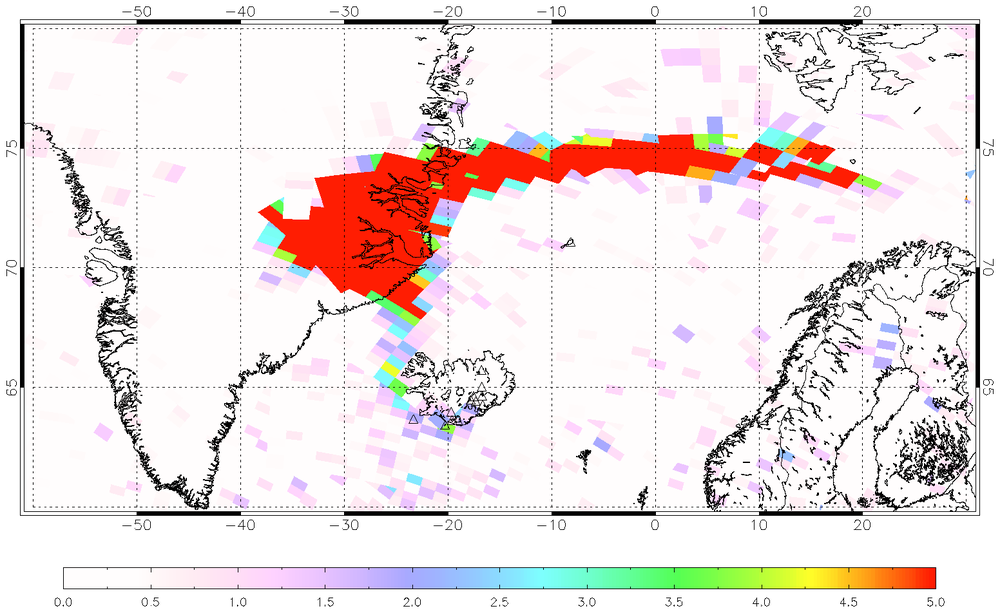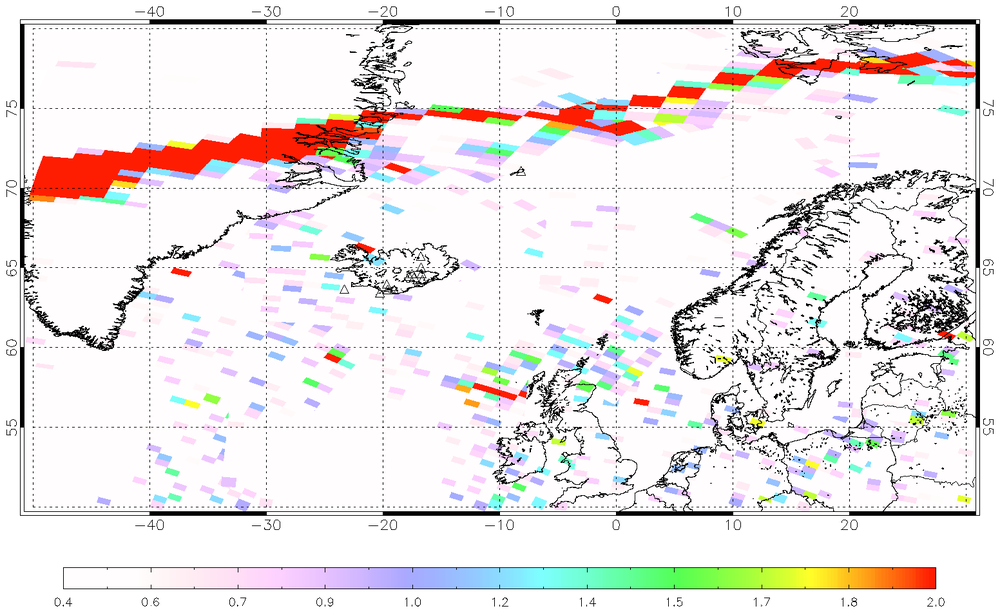GOME-2 instrument observes volcanic SO2 plume from Grímsvötn eruption, Iceland


Sulfur dioxide (SO2) is an excellent indicator for volcanic activity. Satellite observations of volcanic SO2 are used for aviation safety and early warning of volcanic activity. The SO2 retrieval for the GOME-2 satellite instrument is performed in near-real time at DLR Oberpfaffenhofen at the Remote Sensing Technology Institute (IMF) and German Remote Sensing Data Center (DFD) allowing the data to be distributed to users less than 2 hours after the measurements. An SO2 plume from the recent eruption of Grímsvötn volcano, Iceland, was detected by GOME-2 on 22 May 2011. The volcanic cloud has lead to a partial airspace closure in Scotland, Ireland and northern Europe.
On the evening of 21 May 2011 an eruption occurred at Grímsvötn, Iceland. The Grímsvötn is Iceland’s most active volcano, it had been dormant since the last eruption, which occurred in 2004. The volcanic eruption on Saturday evening ejected a large ash and SO2 cloud into the atmosphere, bringing into mind the eruption of Eyjafjallajökull in April 2010, which resulted in an almost complete closure of the European airspace for several days. Even though the current Grímsvötn eruption is larger than the Eyjafjallajökull eruption, it is unlikely that it will have the a comparable influence of the air traffic. First estimates of the eruption height range from 12 -17 km, which is above the typical cruising altitude of airplanes. In addition the volcanic cloud has been distributed mainly towards the north and northeast on the first two days after the eruption, leaving Europe unaffected. However, on 24 May the plume was distributed towards Scotland and lead to a partial closure of the airspace. As the forecasts indicated, the plume reached northern Germany on the evening of 24 May and lead to disruptions in air traffic.
A large sulfur dioxide (SO2) plume from the Grímsvötn eruption was detected by the atmospheric sensor GOME-2 (Global Ozone Monitoring Experiment) on the EUMETSAT satellite, MetOp-A, on the morning of 22 May. The plume was located mainly over Iceland on that day, the following day it had spread out towards the northeast (Fig. 1). On 24 May part of the plume was distributed towards the southeast and was located over Scotland at the time of the GOME-2 observation (Fig. 2), where it caused disruptions in air traffic. The eruption emitted high SO2 amounts into the atmosphere. The maximum values measured by GOME-2 are ~ 85 DU (The amount of sulfur dioxide is measured in Dobson Units (DU), the number of molecules in a square centimeter of the atmosphere). First estimates for the total erupted mass of SO2 indicate almost 1.0 x 106 tons of SO2.
The Global Ozone Monitoring Experiment-2 (GOME-2) is one of the new-generation European instruments carried on board of MetOp, which has been jointly established by ESA and EUMETSAT. GOME-2 will continue the long-term monitoring of atmospheric ozone and trace gases, such as sulfur dioxide (SO2), started in 1995 by GOME on ERS-2 and since 2002 by SCIAMACHY on Envisat. The operational processing and routine analysis of GOME-2 SO2 data are based on the differential optical absorption spectroscopy in the UV wavelength range around 320 nm.
